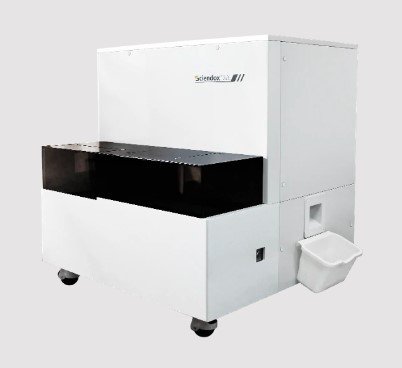Regulations on Importing Custom Medical Devices from Chinese Manufacturers in the United States
Summary
- The United States has strict Regulations in place for importing custom medical devices from Chinese manufacturers for use in medical laboratories and phlebotomy.
- Imported medical devices must meet specific standards and undergo rigorous testing to ensure safety and efficacy.
- It is important for medical facilities to work closely with regulatory authorities to ensure compliance when importing custom medical devices from Chinese manufacturers.
- Biocompatibility Testing: Custom medical devices must undergo biocompatibility testing to ensure that they do not cause harm when in contact with the human body.
- Electromagnetic Compatibility Testing: Devices that emit electromagnetic radiation must undergo testing to ensure that they do not interfere with other medical devices or electronic equipment.
- Sterilization Validation: Custom medical devices that come into contact with patients must be properly sterilized to prevent the spread of infections, and sterilization procedures must be validated and documented.
- Submit the necessary documentation and information for FDA review and approval.
- Address any questions or concerns raised by regulatory authorities regarding the safety and efficacy of the imported devices.
- Implement a quality management system to ensure the ongoing safety and effectiveness of the custom medical devices.
Regulations on Importing Custom Medical Devices from Chinese Manufacturers
Medical laboratories and phlebotomy services in the United States rely on a wide range of equipment and devices to provide accurate and reliable testing results. In some cases, these facilities may need to source custom medical devices from manufacturers in China to meet specific requirements or address unique challenges. However, importing custom medical devices from Chinese manufacturers comes with a set of Regulations and requirements to ensure that the devices are safe, effective, and compliant with U.S. standards.
U.S. FDA Regulations
The U.S. Food and Drug Administration (FDA) is responsible for regulating the importation of medical devices into the United States. Any medical device, including custom devices from Chinese manufacturers, must comply with FDA Regulations to be legally marketed and used in the country. The FDA requires that imported medical devices meet specific standards for safety and efficacy, and manufacturers must provide evidence of compliance before the devices can be imported and sold in the U.S.
Quality System Regulations
One of the key requirements for importing custom medical devices from Chinese manufacturers is compliance with the FDA's Quality System Regulations (QSR). These Regulations set forth requirements for the design, manufacture, packaging, labeling, storage, installation, and servicing of medical devices. Manufacturers must establish and maintain a quality management system that meets QSR requirements to ensure that their devices are safe, effective, and of high quality.
510(k) Premarket Notification
For custom medical devices that are substantially equivalent to devices already on the market, manufacturers may need to submit a 510(k) premarket notification to the FDA. This submission demonstrates that the device is as safe and effective as a legally marketed device and can be legally marketed in the U.S. Importers of custom medical devices from Chinese manufacturers must ensure that the devices have received 510(k) clearance before importing and using them in medical laboratories and phlebotomy services.
Testing and Documentation Requirements
In addition to meeting FDA Regulations, imported custom medical devices from Chinese manufacturers must undergo rigorous testing and documentation to demonstrate compliance with U.S. standards. Importers should work closely with manufacturers to ensure that the devices meet the following requirements:
Working with Regulatory Authorities
Importing custom medical devices from Chinese manufacturers for use in medical laboratories and phlebotomy services requires careful coordination with regulatory authorities to ensure compliance with U.S. Regulations. Medical facilities should work closely with the FDA and other regulatory bodies to:
Conclusion
Importing custom medical devices from Chinese manufacturers for use in medical laboratories and phlebotomy services in the United States is subject to stringent Regulations and requirements to ensure the safety and efficacy of the devices. Medical facilities must work closely with regulatory authorities to ensure compliance with FDA Regulations, testing requirements, and documentation standards. By following these guidelines, medical facilities can import and use custom medical devices from Chinese manufacturers with confidence and ensure the quality of patient care.

Disclaimer: The content provided on this blog is for informational purposes only, reflecting the personal opinions and insights of the author(s) on the topics. The information provided should not be used for diagnosing or treating a health problem or disease, and those seeking personal medical advice should consult with a licensed physician. Always seek the advice of your doctor or other qualified health provider regarding a medical condition. Never disregard professional medical advice or delay in seeking it because of something you have read on this website. If you think you may have a medical emergency, call 911 or go to the nearest emergency room immediately. No physician-patient relationship is created by this web site or its use. No contributors to this web site make any representations, express or implied, with respect to the information provided herein or to its use. While we strive to share accurate and up-to-date information, we cannot guarantee the completeness, reliability, or accuracy of the content. The blog may also include links to external websites and resources for the convenience of our readers. Please note that linking to other sites does not imply endorsement of their content, practices, or services by us. Readers should use their discretion and judgment while exploring any external links and resources mentioned on this blog.
